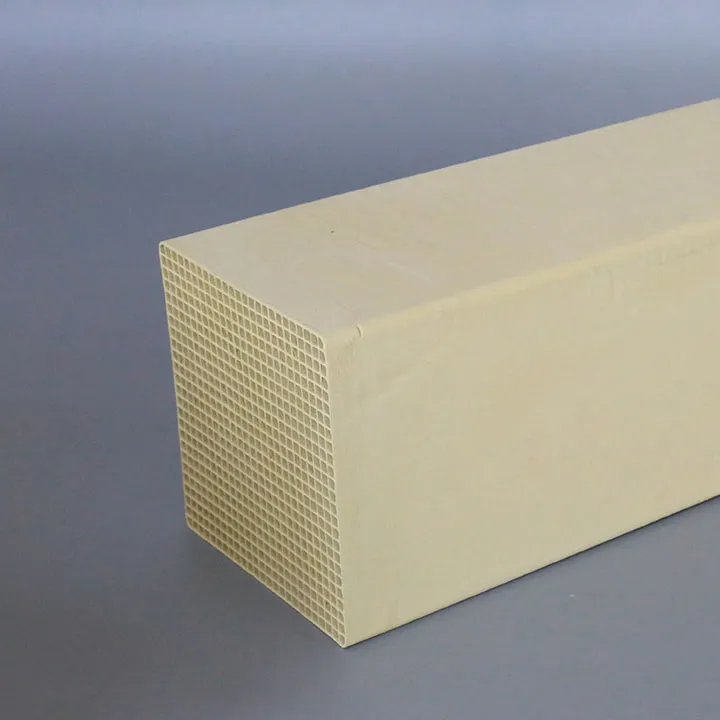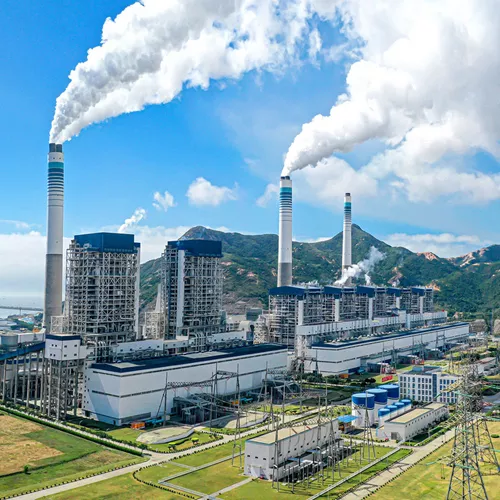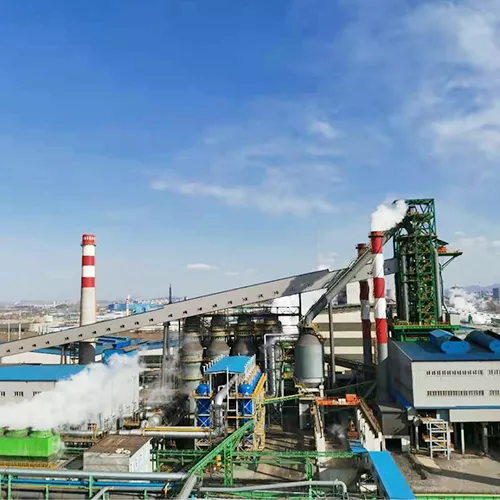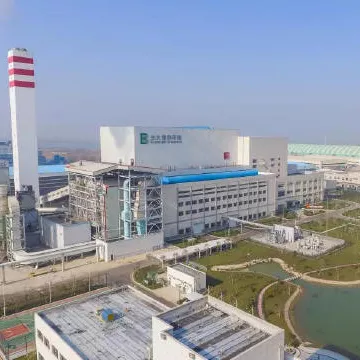Blocage des micropores dans les catalyseurs de dénitrification : analyse des causes et solutions d'optimisation
En fonctionnement et en utilisation réels, bien que la surface du catalyseur de dénitrification soit souvent maintenue propre, les micropores internes sont parfois obstrués. Ce problème inquiète de nombreuses entreprises et affecte directement l'efficacité globale et la durée de vie du système de dénitrification. Alors, qu'est-ce qui cause exactement cette situation ? Comment résoudre ces problèmes pour assurer le fonctionnement efficace et à long terme du catalyseur de dénitrification ? Cet article analysera cela en détail, analysera les causes du problème du point de vue de la pénétration des particules de poussière, du dépôt de sulfate et de l'accumulation de cendres volantes, et proposera des solutions d'optimisation pour traiter le blocage, aidant les entreprises à prolonger la durée de vie du catalyseur et à améliorer l'efficacité du système de dénitrification.
Sept raisons du blocage des micropores dans les catalyseurs de dénitrification
1. Pénétration de poussières et de particules : dangers cachés invisibles Au cours de la réaction de dénitrification, bien que la surface externe du catalyseur puisse rester propre, de minuscules poussières et particules peuvent pénétrer la surface et pénétrer dans la structure microporeuse à l'intérieur du catalyseur. Ces fines particules sont difficiles à éliminer à temps en raison de leur petite taille. Au fil du temps, elles s'accumuleront progressivement à l'intérieur des micropores, entraînant une réduction de la surface effective du catalyseur, affectant ainsi l'efficacité de la réaction de dénitrification. Par rapport à la surface, l'intérieur des micropores est plus difficile à nettoyer, de sorte que ce type de blocage est souvent difficile à détecter et devient un danger caché potentiel.
2. Dépôt de sulfate : un tueur silencieux Lors de l'utilisation de carburants contenant du soufre, le dioxyde de soufre (SO₂) généré par la combustion réagit avec d'autres substances du catalyseur pour former des sulfates. Ces sulfates se déposent souvent profondément dans les micropores du catalyseur, provoquant leur colmatage progressif. En raison du décapage du flux d'air et des températures élevées, la surface externe n'est généralement pas facile à déposer, de sorte que le catalyseur peut toujours sembler intact, mais l'intérieur des micropores a été lentement érodé par les sulfates. Ce processus de colmatage silencieux réduira progressivement l'activité du catalyseur et l'effet global de dénitrification.
3. Accumulation de cendres volantes : accumulation silencieuse Dans les environnements industriels, en particulier dans les centrales électriques au charbon, l'air transporte souvent une grande quantité de cendres volantes et de particules ultrafines. En raison de leur petite taille, ces particules peuvent facilement pénétrer les pores de la surface du catalyseur, pénétrer dans la structure microporeuse et se déposer progressivement. Ce phénomène ne montre pas immédiatement un problème, mais au fil du temps, l'accumulation de cendres volantes dans les micropores va progressivement réduire la zone de réaction du catalyseur, réduisant ainsi l'efficacité de la dénitrification. À ce stade, la propreté de la surface ne reflète pas la situation réelle à l'intérieur du catalyseur, ce qui rend le problème plus difficile à détecter.
4. Vieillissement du catalyseur : une loi naturelle inévitable Au cours de l'utilisation à long terme du catalyseur, la structure microporeuse vieillira inévitablement, la taille des pores diminuera progressivement et l'espace interne deviendra plus petit. Ce phénomène de vieillissement facilite non seulement l'accumulation de particules dans les micropores, mais conduit également à une augmentation du blocage des micropores. Même s'il n'y a pas de blocage évident sur la surface externe, les changements structurels internes causés par le vieillissement affecteront les performances globales du catalyseur. Cela nous oblige à surveiller régulièrement l'état du catalyseur pour éviter l'impact à long terme des problèmes de vieillissement sur l'efficacité de la dénitrification.

5. Accumulation de sous-produits de réaction incomplète : produits inattendus Dans la réaction de dénitrification, l'ammoniac (NH₃) réagit avec les oxydes d'azote (NOx) en tant qu'agent réducteur pour générer de l'azote (N₂) et de la vapeur d'eau. Cependant, dans certaines conditions, cette réaction peut ne pas être complète, produisant certains sous-produits, tels que des sels d'ammonium (NH₄HSO₄). Ces sous-produits se déposent facilement dans les micropores du catalyseur, provoquant un blocage des pores et affectant l'activité du catalyseur. En particulier lorsque les conditions de réaction ne sont pas idéales, l'accumulation de sous-produits peut être plus grave, affectant davantage les performances du catalyseur. À l'heure actuelle, bien que l'apparence du catalyseur puisse ne pas beaucoup changer, les micropores internes ont été tranquillement occupés par des sous-produits.
6. Influence de la vapeur d'eau et des fluctuations de température : facteurs environnementaux à ne pas négliger Pendant le fonctionnement du système de dénitrification, s'il y a un excès de vapeur d'eau ou si la température de fonctionnement fluctue fréquemment, la vapeur d'eau peut se combiner au gaz de réaction pour former des cristaux ou d'autres substances solides dans les micropores du catalyseur. Ces cristaux ou substances solides ne peuvent pas être facilement évacués, bloquant progressivement les micropores et affectant l'activité du catalyseur. En particulier dans un environnement à température instable, des changements fréquents de vapeur d'eau et de température accéléreront la formation de blocages. Bien que la surface externe soit toujours lisse, les micropores internes ont été sérieusement affectés et l'efficacité de la réaction de dénitrification est considérablement réduite.
7. Effet de nettoyage irrégulier : angle mort potentiel du nettoyage La plupart des systèmes de dénitrification sont équipés de dispositifs de nettoyage pour empêcher le dépôt de particules de poussière. Cependant, si le système de nettoyage n'est pas conçu correctement ou si l'effet de nettoyage est irrégulier, la surface du catalyseur peut rester relativement propre, mais l'accumulation de poussière dans les micropores internes n'est pas complètement éliminée. Cette situation entraînera une aggravation progressive du problème de blocage des micropores, affectant l'efficacité globale de la réaction du catalyseur. La négligence à long terme de l'uniformité de l'effet de nettoyage réduira considérablement la durée de vie du catalyseur.
Comment résoudre le problème de blocage des micropores ?
Maintenant que nous comprenons les principales raisons du blocage des micropores, comment pouvons-nous résoudre efficacement ce problème ? Voici quelques suggestions pour aider les entreprises à mieux maintenir les performances de catalyseurs de dénitrification dans les opérations quotidiennes :
1. Nettoyage et entretien réguliers Nettoyez et entretenez régulièrement le catalyseur, en faisant particulièrement attention à l'effet nettoyant des micropores internes, assurez-vous que le dispositif de nettoyage peut couvrir toutes les parties du catalyseur et évitez le problème d'un nettoyage local incomplet.
2. Surveiller les conditions de réaction Surveillance en temps réel des conditions de fonctionnement du système de dénitrification, notamment la température et la teneur en vapeur d'eau, pour garantir que le système fonctionne dans des conditions optimales et réduire la génération et le dépôt de sous-produits.
3. Optimiser le carburant et les conditions de réaction Choisir autant que possible un carburant à faible teneur en soufre pour réduire les dépôts de sulfate. En même temps, optimiser les conditions de réaction de l'ammoniac et du NOx pour éviter les problèmes de sous-produits causés par des réactions incomplètes.
4. Régénération du catalyseur Pour les catalyseurs qui se bouchent après une période d'utilisation, vous pouvez envisager de les traiter grâce à une technologie de régénération pour restaurer la structure microporeuse et l'activité du catalyseur et prolonger sa durée de vie.
5. Vérifiez régulièrement l'état du catalyseur. Utilisez un équipement de test spécial pour vérifier régulièrement l'état du catalyseur, en particulier la perméabilité des micropores. Grâce à des méthodes de surveillance scientifiques, les problèmes potentiels peuvent être découverts et résolus en temps opportun pour éviter que le blocage n'affecte les performances du système.
Conclusion
Le blocage des micropores est un problème courant dans l'utilisation à long terme des catalyseurs de dénitrification. Bien que la surface puisse rester propre, un blocage interne se forme progressivement. En comprenant l'influence de facteurs tels que la poussière, les cendres volantes et le dépôt de sulfate, et en prenant des mesures efficaces de nettoyage, de surveillance et d'optimisation, les entreprises peuvent améliorer considérablement l'efficacité d'utilisation des catalyseurs de dénitrification et assurer le fonctionnement stable à long terme du système. Une gestion intelligente et une maintenance scientifique aideront les entreprises à rester sur la voie de la protection de l'environnement.















